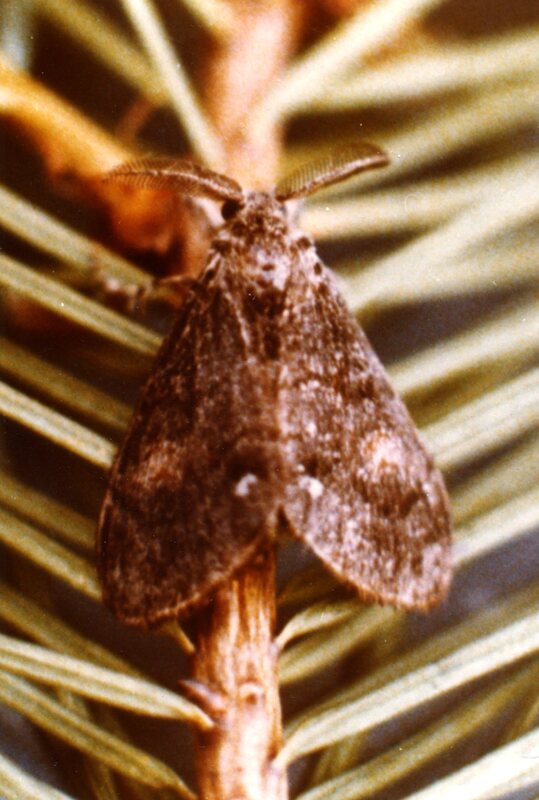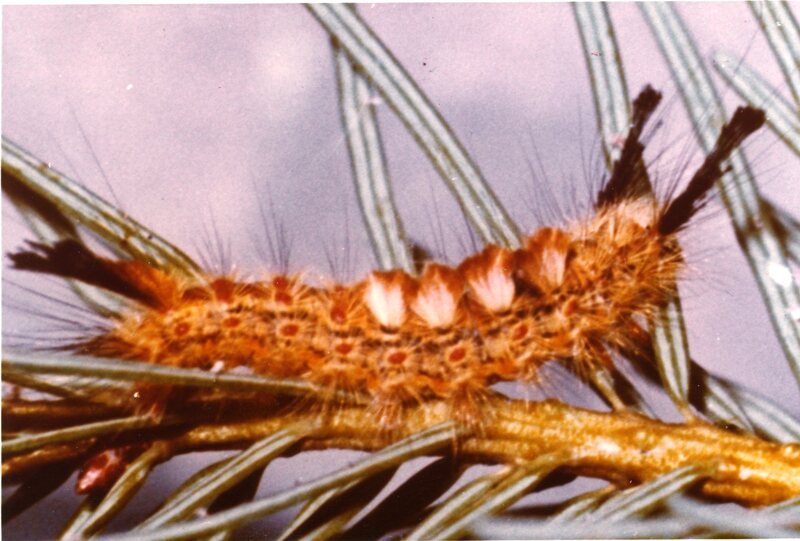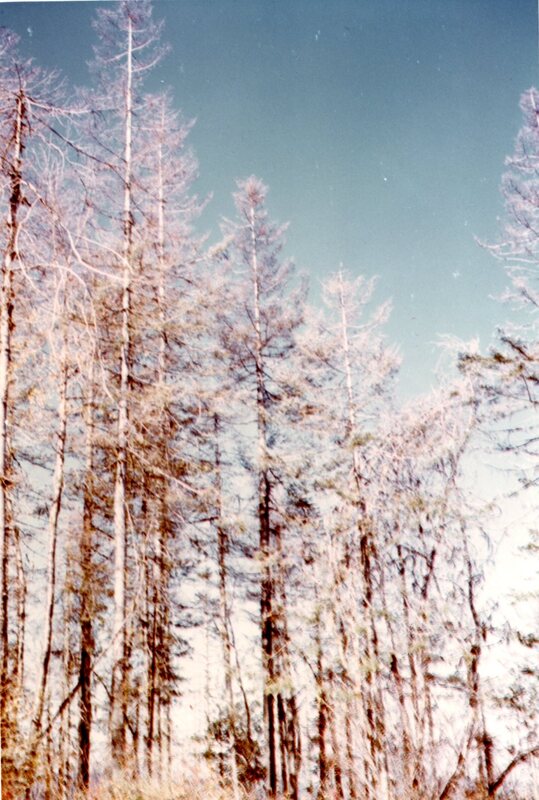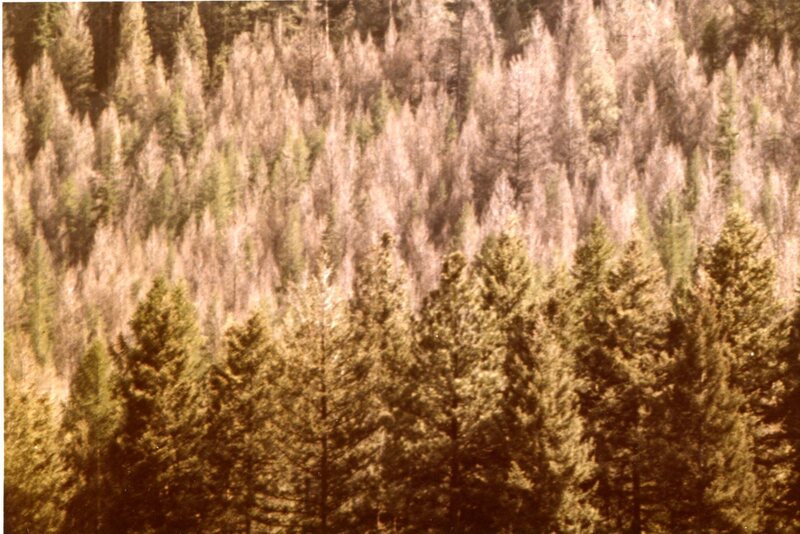Today’s post will focus on the Douglas fir tussock moth, a defoliating moth.
Various forms of the Tussock Moth can be found throughout the world, but the Douglas fir tussock moth is prevalent where Douglas fir trees are native, in western North America. Douglas fir tussock moths primarily attach Douglas fir, grand fir, subalpine fir and spruce trees, but will also feed on larch, shrubs and even pines. Tussock moths can be seen every year in Idaho, but a population boom can be expected every 8-10 years. The larvae or caterpillar stage of the tussock moth are the cause of defoliation.
Larvae typically go through 4-6 instars or stages, but can go up to 7 under stressful situations. Mature larvae are typically 32 mm (1 1/4 in) long, with two long black horn-like tufts of hair projecting forward above their heads while short and long irritant hairs cover their bodies. The hairs of Douglas-fir tussock moth larvae can cause an allergic reaction called tussockosis in people, pets, and other animals.
Newly hatched larvae gather and feed primarily on the underside of new foliage at the tops and outer branches of host trees, causing needles to shrivel and turn brown, inevitably killing the tops of the trees and slowing growth. Larvae that hatch on defoliated trees spin down on long silken threads, to be caught on the wind and possibly blown considerable distances, quickly infecting a whole forest. Dangling larvae are possibly seen in the above photo.
As the larvae mature, they start moving down the tree, feeding on older foliage and potentially killing the entire tree. Tussock moth outbreaks typically last 3 years in Idaho, and trees that were infected in previous years are more susceptible to future outbreaks.
Sources
A lot of research has been published on tussock moths, but the above information came primarily from UI Extension Forestry Information Series II Insects & Diseases No. 15 Douglas-fir Tussock Moth by Chris Schnepf, as well as U.S. Department of Agriculture and Forest Service Forest Insect & Disease Leaflet 86 Douglas-Fir Tussock Moth by Lee Pederson, Tom Eckberg, Laura Lowrey, and Beverly Bulaon.







